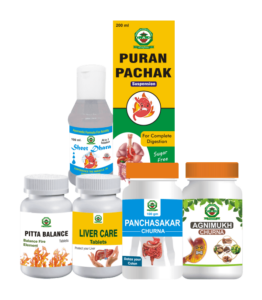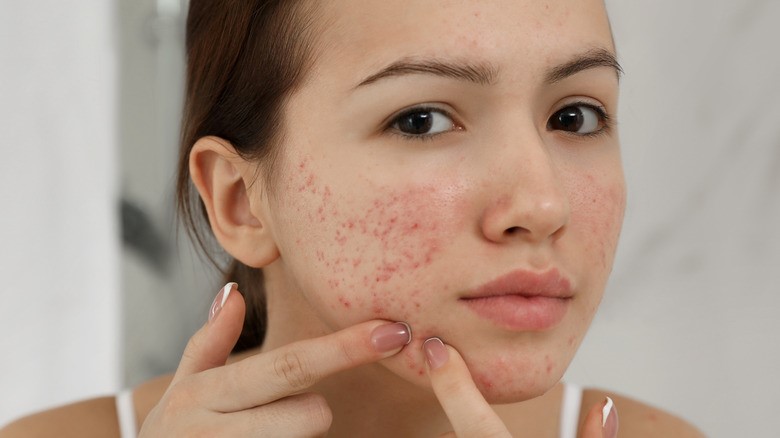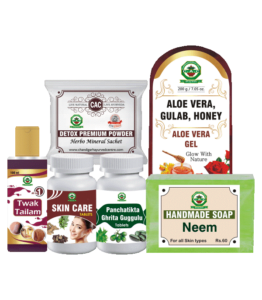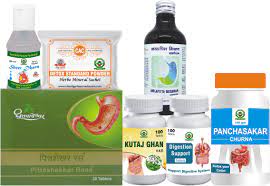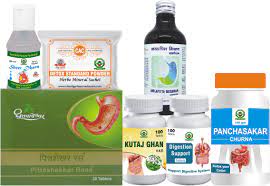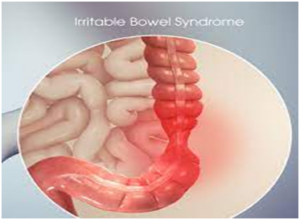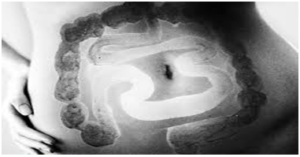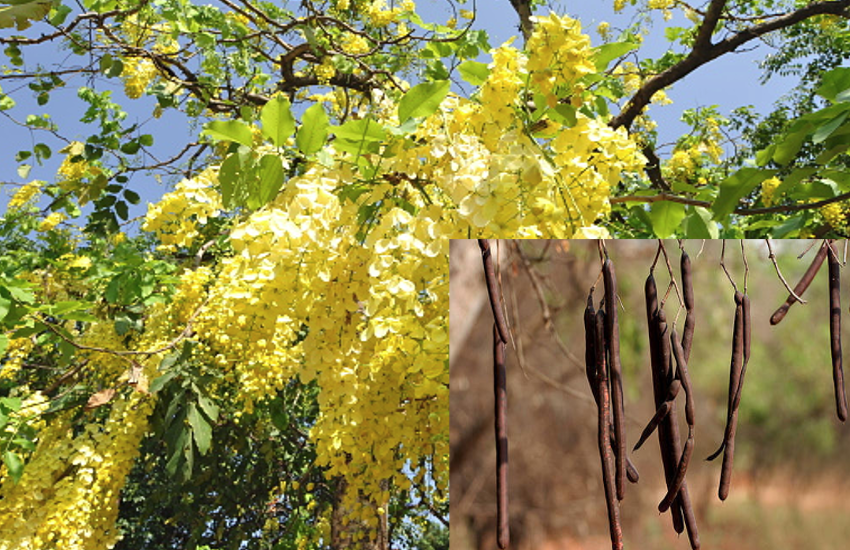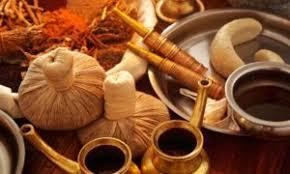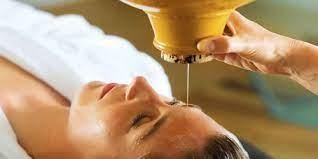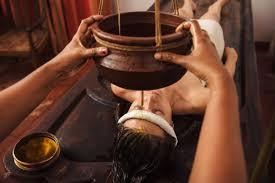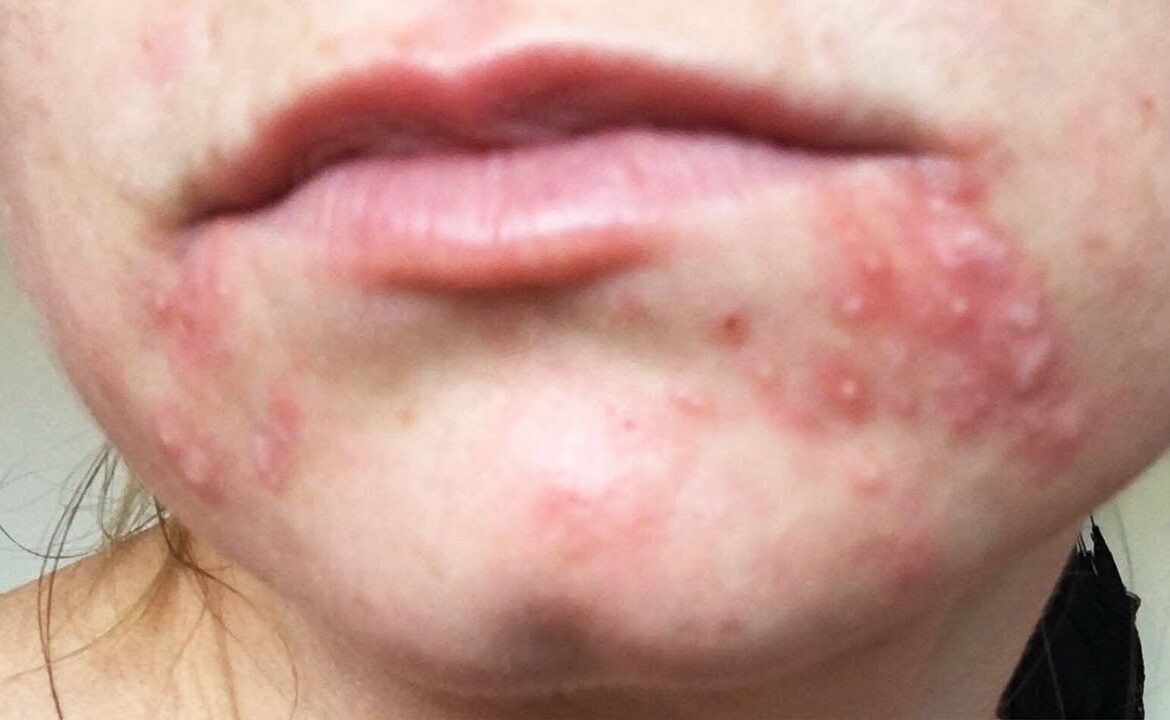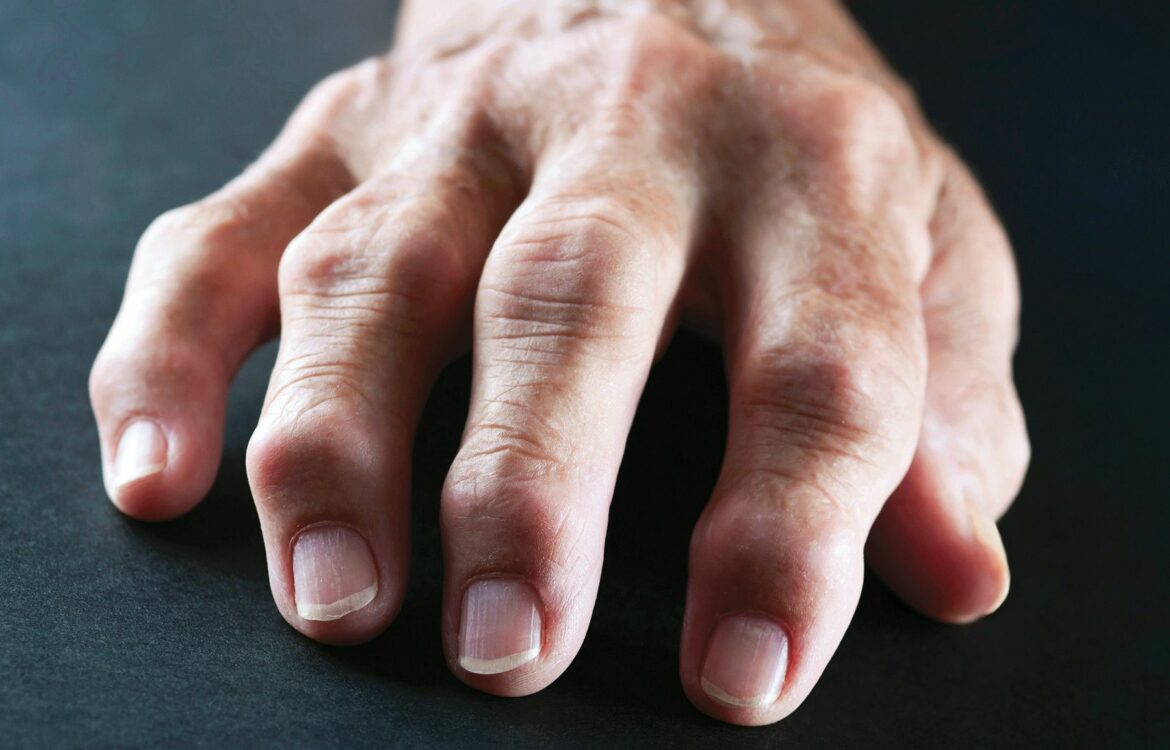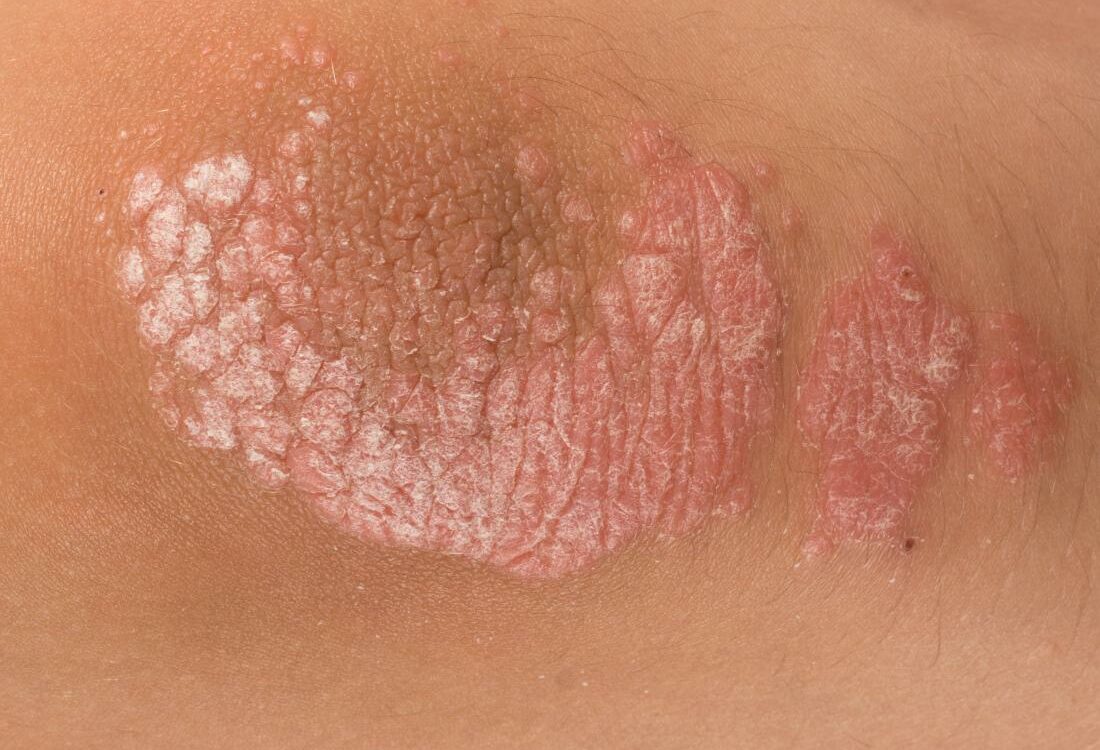Author Archives: Dr. Vaidya Karanvir Singh
AYURVEDIC MEDICINE FOR ACID REFLUX TREATMENT
- December 13, 2021
- Posted by Dr. Vaidya Karanvir Singh
- 0 Comment(s)
WHAT DOES HYPERACIDITY MEAN
- Hyperacidity is a medical condition in which the amount of acid in the gastric juices is excessive or stomach secrets lots of acid, causing discomfort.
- It is also known as “Acid Dyspepsia”.
- Everyone has specific triggers.
- Common triggers such as tomato sauce, fatty or fried foods, alcohol, chocolate, mint, garlic, onion, and caffeine may make hyperacidity worse.
- Hyperacidity often occurs after consuming spicy and processed foods.
- If this problem is affecting a person for a long time, then the diagnosis and treatment should be done by contacting the doctor.
ACIDITY CAUSES HIGH BLOOD PRESSURE
Many factors are involved in the development of high blood pressure, but acidity has an increased risk of hypertension. It can trigger elevations in blood pressure (BP), especially at night.
HOW DOES ACID FEEL LIKE
Hyperacidity can develop in people of all ages. The stomach acid helps the break down and digest food items. Sometimes, a higher than normal levels of stomach acid can be produced. This can lead to symptoms such as nausea, bloating, abdominal pain, heartburn. It can cause problems swallowing, chest pain, and feeling of a lump in the throat, regurgitating food or liquids, and vomiting.
WHAT DOES BEING ON ACID FEEL LIKE
There is no single description of how an acid feels. However, experts know that the effects of acid reflux can cause some or all of the following:
- Sore throat
- Burping
- Bloating– excessive gas formation
- Hiccups that don’t let up
- Regurgitation: a sour or bitter-tasting acid backing up into the mouth or throat.
- Nausea or bloody vomiting
- Feeling of food being stuck in the throat (dysphagia)
- Heartburn: a burning pain or discomfort that may move from the stomach to the chest, abdomen or even up into the throat
DOES ACID REFLUX CAUSE CONSTIPATION
Acid reflux is one of the most common problem of the gastrointestinal system. Acid reflux is also known as indigestion of acid. Its common symptoms are burning sensation, acidic burping, nausea, bloating and hiccups. If this problem is affecting a person for a long time, then can develop constipation.
Read Also: How To Treat Acid Reflux Disease Naturally?
WHAT IS ACID LIKE
Gastric acid or Stomach acid, is a watery, colorless fluid that’s produced by the stomach’s lining. It’s highly acidic and helps break down food for easier digestion. This helps the body absorb nutrients more easily as food moves through the gastrointestinal tract. The normal levels of stomach acid doesn’t cause any illness or health complications but low or high levels of stomach acid can be problematic.
Which Ayurvedic Medicine Is Best For Acid Reflux?
CAC provides the best ayurvedic medicine for acid reflux
We at Chandigarh Ayurved and panchakarma Centre give you the best herbal remedies and ayurvedic medicines such as the “Acidity Care Kit” for natural and ayurvedic treatment of Acid Reflux. These remedies cure the disease of its root with no other complication on your body.
“Opt for Natural and safe Ayurvedic products for Acid Reflux”
AGNIMUKHA CHURNA
This herbal churna is prepared from ingredients like Vacha (Acorus calamus), Pippali (Piper longum), Sonth (Zingiber officinale), Ajwain (Trachyspermum ammi), Haritaki (Terminalia chebula), etc that balances vata & kapha doshas in the body. It gives effective results in indigestion, anorexia, abdominal pain, constipation, loss of appetite, flatulence, bloating, intestinal gas, intestinal gas, etc.
Recommended Dosage: Take a half teaspoon of this churna twice daily with normal water.
PITTA BALANCE TABLET
Pitta doshas is responsible for digestion, metabolism, blood quality, thirst, appetite, eyesight, skin color and quality, body temperature, and mental abilities of intelligence and courage. Pitta doshas is composed of a fire element that digests almost everything that a person eats or drink. The eaten food is transformed into energy for the body to use in various functions of the body.
Recommended Dosage: Take 1 tablet twice daily with normal water.
PURAN PACHAK SYRUP
Puran Pachak is a herbo-mineral Syrup of 200 ml and is Purely Ayurvedic formulation. CAC Puran Pachak syrup helps in Digestion, Supports the Digestive system, and maintains the doshas in our body. It also helps to remove out impurities or ama from the body. This syrup reduce the Acidity, Detoxify the blood and also supports the body health. It shows Antacid, Digestive, Anti-inflammatory, Analgesic, Expectorant, and Antioxidant properties. This syrup is made up of pure ayurvedic herbs such as Mulethi, Saunf, Vasakha, Ajwayan, Prpati etc. that helps to maintain the Digestive system and in the body.
Recommended Dosage: Take 2 teaspoonful twice daily.
Read Also: Gastro-Esophageal Reflux Disorder
SHEET DHARA SYRUP
This herbal syrup is prepared from ingredients such as ajwain satav, mushak kapoor, peppermint, etc that naturally relieve the symptoms like bloating, blenching, nausea, vomiting, feeling of discomfort, etc. The regular use of this herbal syrup neutralizes the high acid content, reduces abdominal pain, & cramps.
Recommended dosage: Take half teaspoonful of this syrup in half a cup of water. Drink this mixture twice daily on an empty stomach.
PANCHSAKAR CHURNA:
This is a classical herbal churna prepared from ingredients such as Saindhavan Lavana (Rock Salt), Swarnapatri (Cassia angustifolia), Shatapushpa (Anethum sowa), Shunti (Zingiber officinale), Balaharitaki (Terminalia chebula). These all in combination deal with problems like loss of appetite, abdominal pain, bloating, flatulence, constipation, weak digestion, etc.
Recommended Dosage: Take a half teaspoon of this churna twice daily with normal water.
LIVER CARE TABLET
These tablet are 100% safe and purely ayurvedic formulation. It maintains the proper functioning of the liver and stimulate the growth of new liver cells. Liver Care Tablets contains Ingredients like Kalmegh (Andrographis paniculata), Kutaki (Picrorhiza kurroa), Bhumi amla( phyllanthus niruri), Giloy(Tinopora Cordifolia), Yavakshar( Hordeum vulgare), Imli Kshar( Tamarindus indica), Mukta Shukta pisti etc. These herbs balances excess Pitta Dosha and helps in problems like abdominal bloating,flatulence, abdominal pain, loss of appetite and indigestion.
Recommended Dosage: Take 1 tablet twice daily with normal water.
Does Ayurveda Help With Acid Reflux?
Yes, Acid Reflux can be treated with help of Ayurveda. Ayurveda identifies Acid reflux disease as Amlapitta. Ayurveda treatments aim is balancing the Pitta dosha that is responsible for acid reflux. The Dosha can be treated with systemic use of medicines combined with healthy Diet and Lifestyle. Panchakarma procedures such as Takra Vasti, Kashaya Vasti has tremendous results in acid reflux disease.
Diet & Lifestyle Advice:
- In case of belching and acid reflux fasting or upvasa is very beneficial.
- Avoid tea, coffee, and carbonated or alcoholic beverages.
- Limit processed and spicy foods.
- Avoid too much Snacking
- Eat only when hungry.
- Incorporate any kind of physical activity and exercise.
- Eating meals in small proportions can help you.
- Sipping warm water during a meal will help in digestion and absorption of food
- Keep your head elevated with pillows while sleeping
- Consume cumin or ginger herbal tea at least once a day.
- Very cold drinks such as iced drinks should be avoided.
- Avoid taking food items that are hot in nature.
- Limit using spices such as garlic, onions, ginger, tomatoes, and vinegar in cooking.
- Sour, salty, and spicy foods should be avoided
- Curd should be strictly avoided.
- Using some herbs and spices in the diets such as cumin, basil leaves, fennel seeds, turmeric, coriander, carom seeds, and hing (asafetida) can reduce acid reflux.
Yoga practice-
- Vajrasana
- Bhujangasana
- Salabhasana
- Bhastrika Pranayama
- Shitali Pranayama
- Shitkari Pranayama
How Do You Permanently Treat Acid Reflux?
Acid reflux problem can be treated with ayurvedic medicine and therapies. Best is to treat acid reflux with complete and proper herbal supplements to avoid any side effects. As per Ayurveda its lifestyle disease so along with ayurvedic treatment you also need to follow diet and healthy lifestyle. Consuming multiple allopath medicines will harm internal mucosa of stomach and intestines. And its temporary effective. So switch to ayurvedic, Ayurveda gives you a permanent cure for it.
Ayurveda treatment focuses on calming down the irritated Pitta Dosha lead to acid reflux. For this, certain ayurvedic herbs are used to get rid of the toxins that block these channels.
Amla (Emblica officinalis)
Elevated pitta is responsible for acid reflux. This natural herb helps in reducing pitta. It can be eaten raw or taken in the form of juice.
Mulethi (glycyrrhiza glabra)
Take half a spoon of mulethi root powder and add little honey to form a paste. Lick to consume this paste twice daily after meals. This paste neutralizes the acids quickly to give relief.
Cumin seeds (Cuminum cyminum)
Consuming cumin seeds powder with water instead of normal water is quite an effective remedy for acid reflux.
saunf (Foeniculum vulgare)
Also known as aniseed, for quick relief from acidity you can chew them raw and slowly swallow with water.
Mint leaves (Mentha piperita)
Mint leaves lower acid formation and cools the burning sensation in the stomach due to its cooling properties.
Cardamom (Elettaria cardamomum)
Elaichi is a multi-purpose remedy. It decrease stomach spasms, stimulates digestion and prevents excessive acid production.
Ginger (Zingiber officinale)
It also protects the stomach from ulcers by boosting mucus secretion, which reduces the damage to the stomach lining caused by acid reflux.
Banana (Musa acuminate)
Ripe bananas contains potassium that helps in reducing acid reflux.
Jaggery
This ayurvedic remedy for acid reflux, you can try for the boiled ash gourd with jaggery. This relieves the burning sensation in the stomach to a considerable extent.
Cold milk
Cold milk provides instant relief from the burning sensation owing to its coldness.
Buttermilk
Mix a pinch of each asafetida and turmeric in half a glass of buttermilk and consume it.
Tulsi (Ocimum sanctum)
How Do You Neutralize Acid Reflux Naturally?
People with acid reflux often reach for over-the-counter medications (anta acids) that neutralize stomach acid reflux. But consuming certain foods provide relief from symptom and can also Neutralize Acid Reflux naturally.
- Whole grains such as oatmeal, couscous and brown rice.
- Root vegetables such as sweet potatoes, carrots and beets.
- Green vegetables like broccoli, asparagus and green beans.
- To neutralize acid reflux naturally put a small amount of Apple cider vinegar in Luke warm water and consume it with meals.
- Alkaline foods such as Bananas, Melons, Cauliflower, Fennel and Nuts helps neutralize acid reflux naturally.
- Watery foods like Celery, Cucumber, Lettuce, Watermelon, Broth-based soups, Herbal tea that contain a lot of water can dilute and weaken stomach acid.
- Milk provide immediate relief of acid reflux symptoms due to its soothing qualities.
- Ginger- This herb is a great digestive aids due to its alkaline nature and anti-inflammatory properties. Ginger eases symptoms of acid reflux in the digestive tract.
How To Treat Pimples Naturally And Quickly?
- December 13, 2021
- Posted by Dr. Vaidya Karanvir Singh
- 0 Comment(s)
Pimples and acne are generally troubled by many people. The spots and pimples that appear on the face work to spoil the beauty as well as reduce your confidence.
Pimples start coming out on the face when oil collects in the pores of the skin or dirt accumulates on the face. Dead skin prevents cells from growing and causes breakouts like whiteheads and blackheads that turn into pimples. At the same time, due to hormonal imbalance and improper hygiene, pimples can also occur.
Follow these tips to avoid pimples
With these tips, you can get rid of pimples naturally and quickly.
Exercise
- It is actually quite important for a healthy well – being.
- It further helps in reducing the amount of cortisol and stress hormones in the body.
- It also helps in improving your mental health and mood.
- It helps to regulates hormones and increases blood circulation of the body.
- Stress is one of the major causes of acne, and it helps to reduce stress and improves your sleeping pattern.
- Sleep is very important to reduce stress.
- Yoga and Pranayama proves to be the best stress buster which calms you down and helps in maintaining hormonal balance.
Healthy Diet
- If you want to avoid pimples and acne, then make a habit of healthy and balanced diet.
- One should avoid eating foods that are rich in carbohydrates such as bread and chips as they can cause acne.
- Cut off sweet things from your diet like chocolate and sweets.
- Instead, you can eat vegetables, fruits, juices, nuts, etc., which will help in keeping your body hydrated.
- At the same time, to get more and more water to get pimple free skin, many people also believe that greasy food can cause pimples, but it depends on the immune system of the person.
- Some people have a strong immune system that digests all kinds of food but people who are prone to acne should always take precautions.
Read Also: How to Remove Dark Spots Caused by Pimples
Stay Away From Dirt
- Dirt is one of the major causes of acne.
- If it is not treated on time, it turns into bacteria that cause pimples.
- It is very important to maintain cleanliness not only for you but also around you.
- Take bath daily and keep your skin moisturized.
- At the same time, be careful while cleaning the acne-prone area.
- Rubbing pimples leaves scars which are difficult to treat in a short period of time. Always keep the area around you clean.
- Keep sheets, towels, clothes and other things you use clean.
NATURALLY TREAT YOUR PIMPLES
Try out some home remedies to remove pimple from skin.
Apart from the above mentioned measures, it is very important to take care of your skin, which you can keep by using these natural products:
Green Concoction for Pimples
- Green Concoction is beneficial for improving the skin tone as well as good for the bodily health.
- It is the best naturally solution for healing pimples naturally.
- Anti- aging oxidants are found in green tea helps to combat against harmful bacteria.
- Green concoction can be boiled and used as a toner with the help of a cotton ball.
Fuller’s Earth for Pimples
- It is used in the form of various face packs and is well known for its amazing effects.
- Fuller’s earth or Multani mitti not only makes your skin glowing but also helps in getting rid of pimples.
- It also reduces excess oil from your skin.
- You can apply the paste of multani mitti as a face pack after mixing it with rose water.
Aloe Vera Gel for Pimples
- Aloe vera is very beneficial in removing pimples from the face.
- By applying aloe vera gel, along with getting rid of pimples.
- It is the best moisturizer for the skin.
- It not only reduces pimples but also reduces blemishes on your skin.
- Using aloe vera is very beneficial in removing pimples naturally from your face.
Oatmeal
- Oatmeal keeps the stomach cool and gives you plenty of fiber.
- It has the ability to cure pimples very quickly, if applied as a face pack.
- Perhaps you did not know that it is also helpful in purifying the pores of our skin and absorbing excess oil from it.
- Apply it by mixing it with honey and lemon juice, surely the pimples will end soon.
Honey for Pimples
- You can use honey for clear and glowing skin i.e. free from pimples.
- Raw honey is very effective in reducing the redness caused by pimples and it is also very beneficial for your skin.
- You can also use Honey by mixing it with cinnamon powder.
- It helps to make your skin pimple free.
- Mix honey with lemon juice and apply this pack to the face for 15 to 20minutes and then wash it out with plain water.
Coconut Oil for Pimples
- Coconut oil is an effective skin care ingredient, as it is rich in excellent natural moisturizing agents.
- It reduces blemishes from the face and is effective in treating pimples.
- It also makes your skin soft naturally and removes the dryness of your skin.
CAC SPECIAL ACNE GO KIT
ALL PRODUCTS DESCRIPTION IN DETAIL:
1) Neem Soap:
Neem is one of the miracle herbs that offer many health benefits. It is an ultimate acne killer & acts as a powerful healer. The soap is very beneficial in healing the acne naturally. It treats issues like too much oiliness or dryness of the skin, red rashes due to permanent inflammation and painful big acne lumps.
Method of Application – Use for daily bathing purpose.
2) Twak Tailam:
Twak tailam is used for those who have acne-prone skin, skin discoloration and equally good for all skin types. It includes – Wrightia tinctoria, Coconut oil. This oil has been subjected to less intense refining, lower temperature with no chemicals. It has pacifying or cooling properties which further beneficial for improving the skin’s elasticity. In one single step, the skin is deeply cleansed as well as moisturized. It seeps into the pores and hydrates deeply and the molecules present in the oil ensuring the repair of the collagen layer.
Recommended Dosage: For external application over the affected area.
3) Aloe Vera Gel:
Aloe Vera Gel is formed with the pure extract of herb Aloe Vera and the mixture of rose petals. Thus this wonderful composition provides a cooling effect on the skin that relieves from burning sensation, itchiness, etc. The gel helps in maintaining healthy skin and repairing skin damage.
Recommended Dosage – Gently apply over the affected area of the skin.
4) Panchatikta Ghrita Guggulu:
The tablets are very beneficial in curing skin diseases as it contains the Pitta pacifying ingredients such as Shuddh guggulu (Commiphora mukul), Neem (Azadirachta indica), Amrita (Tinospora cordifolia), Gajapippali (Piper chaba), Shunthi (Zingiber officinalis), etc. The tablet is Tridoshahara, thus is very effective in maintaining the hormonal level in the body.
Recommended Dosage – Take 2 tablets twice daily with normal water.
5) Skin Care tablet:
Skin care tablet is herbo mineral and purely ayurvedic formulation. It contains various herbs like Haridra khand, Panchnimba churna, Panchatikta guggulu, Patol patra, Ajmoda, Khadir chhal, Chirayta, Mulethi, Manjistha, Chopchini, Gandhak, etc. Skin care tablet is a blood purifying. It cools and detoxifies the blood, dissolves obstructions in the blood flow that further increase blood circulation of the skin. It minimises the blemishes, lighten sun tan, delay ageing of skin and heal skin problems. These tablet also act as a skin moistuirizer, Improves blood circulation, Remove blemishes, Reduce itching and burning sensation of skin, Prevent acne and pimples, Relieves leucoderma.
Recommended Dosage – Take 2 tablets twice daily with normal water.
Read Also: How to Cure Pimples (Acne) through Ayurvedic Medicines?
6) Detox Premium Powder:
This is a herbo-mineral preparation that contains ingredients like Parwal Pishti, Giloy satv, Shukta Pishti, Kamdudha Ras, Gandhak Rasayan, etc.
Parwal Pishti: This Pishti reduces inflammation, flaking, itching of the skin. The Pishti is composed of natural coral calcium processed with rose water.
Shukta Pishti: It helps to balance the Pitta dosha in the body. All signs and symptoms related to Psoriasis patients are managed with this article.
Giloy Satv: This satv is prepared from the herb Giloy (Tinospora cordifolia). The anti-inflammatory, antioxidant, and analgesic properties of this herb deal with psoriasis easily.
Kamdudha Ras: This herbal-mineral classical preparation balances Pitta dosha in the body.
Gandhak Rasayana: This herbal preparation is used since ancient times for all types of skin disorders.
Tal Sindoor: It contains ingredients like Shuddh parad, Aloe vera, Gandhak, etc that relieve redness in psoriasis patients.
Akik Pishti: This Pishti reduces all types of Pitta related disorder hence it gives good results in psoriasis.
Recommended Dosage: Take 1 sachet twice daily with plain water.
What is Best Diet for Irritable Bowel Syndrome
- December 10, 2021
- Posted by Dr. Vaidya Karanvir Singh
- 0 Comment(s)
Know about Best Diet for Irritable Bowel Syndrome
Diet for Irritable Bowel Syndrome – People who suffer from IBS (Irritable-bowel-syndrome) often have problems like heartburn and indigestion. By making some changes in the diet, this disease can be got rid of. In the disease of irritable bowel syndrome, the digestive system is always disturbed. Irritable bowel syndrome or IBS can be relieved by making the right changes in the diet.
Also Read : Home Remedies for IBS
Symptoms – including pain in abdomen and changes in the pattern in movements of bowels without any damage. [1] These symptoms occur over a long period of time, often over years, with irritable bowel syndrome (IBS) being a common disorder affecting a large population worldwide.
Also Read : Why CAC IBS kit is good for IBS patients
According to experts, one of the many tried and tested methods is by isolating the culprit food item by selective elimination of any one of the above for a period of at least 12 weeks. Once a problem food is encountered, simply eliminating it from your diet can solve the problem.
Best diet for ibs
Eat fiber foods
include more and more soluble fiber in your diet , it is one of easiest way to avoid problems like IBS . it improve your digestion, and also releive problems like constipation. Eat more green vegetables and fruits. High fiber diet is usually advised as an aid to bowel spasm by absorbing water. The recommended amount of fiber in one’s diet is 20 – 35 grams, but an average person has about 5 – 10 grams on a regular basis.
Eat gluten free foods
If you are suffering from IBS, then do not include gluten-containing things in your diet at all, by doing this you will start feeling better in a few days.
Should drink less tea and coffee
Minimize consumption of tea, coffee and alcohol, as their consumption increases the problems related to stomach. If you consume too much of them, you may also have diarrhea problems. Excessive consumption of alcohol can also cause dehydration. If you want to remove the problem of digestive system and intestine, then follow these measures.
Also Read : Treatment of Irritable Bowel Syndrome (IBS) in Ayurveda
Don’t eat fatty foods
If you eat more fatty things than you need, then it can worsen your condition and you can also face a lot of difficulties while passing bowel movements. Therefore, instead of fried and fried things, eat fruits and green vegetables.
Low-fat diet:
High-fat foods are generally low in fiber and can cause constipation leading to more irritation of the bowel. Low-fat foods also include lean meats, low-fat dairy such as yogurt, cheese, etc., vegetables, whole grains, fruits. Avoiding sugar-free foods: Sugar-free foods contain ingredients like sucralose, acesulfame potassium and aspartame, which are difficult to absorb by the body, especially if you have irritable bowel syndrome.
Eat less gas
Eat less such things, due to which the gas becomes in the stomach. Broccoli, beans and cabbage are the only vegetables that produce more gas. Apart from this, excessive consumption of garlic and onion can also be harmful. So it is better to consume them in limited quantity. To keep the digestive system better, definitely eat ginger.
Do not consume dairy products
Dairy items also sometimes aggravate IBS symptoms. Get complete information from your doctor about what you can and cannot eat in dairy products. The reason for every disease is poor digestion power, keep it like this.
food to eat to help irritable bowel syndrome
People who are troubled by IBS need to pay special attention to their diet. Here we are telling the whole day’s diet chart for a person suffering from IBS.
Empty stomach in the morning
A glass of lemonade / a glass of vegetable juice/ A glass of milk /
At breakfast
1 sprout dosa / 1 bowl poha without onion
Mid morning breakfast
a banana
Lunch
1 bowl salad / 1 bowl brown rice with lentils + 1 bowl vegetable + 1 bowl buttermilk
Evening snack
Boiled chickpeas with salt and pepper
Dinner
1 bowl salad / gourd or mixed vegetable soup / 1 jowar bhakri / 1 bowl vegetable / 1 bowl
Apart from all this, drink at least 8 glasses of water per day.
Food to reduce ibs symptoms
- Elimination of either coffee, chocolate, insoluble fiber or nuts: Upward bowel movements have been observed.
- Consume these food items in limit
- Dairy products, for people who are intolerant of sugars.
- Consume raw fruits and vegetables, bran and whole grains, a high fibrous foods should be taken
- Foods forming gas such as broccoli, cabbage, and foods with hulls, such as seeds, nuts, and corn and onions,.
- Fried foods, , mayonnaise, ice cream, butter and margarine peanut butter, nuts, and fatty cuts of red meat, a high fat forming foods should be avoided.
- Spicy food
- Caffeinated foods, such as chocolate, tea and coffee.
- Carbonated drinks.
Also Read : What is IBS
Do’s and don’ts
What to do
- Avoid caffeine or alcohol
- Avoid eating high fiber legumes
- Avoid processed food
- Avoid dairy products
- Avoid whole nuts
What not to do
- Choose lean meats and proteins
- eat cooked vegetables
- eat tasteless food
- eat food in small pieces
- keep a food diary
Food items that you can easily consume
- Cereals- Oatmeal, Rice, Pasta
- Fruits and vegetables- banana, stewed apple, avocado, potato, okra, pureed vegetable soup, salad
- Meat and eggs – fish (salmon), lean chicken, turkey, eggs
- pulses and beans
- Fats and Oils – 3-4 tsp oil/day
- Sugar – 1-2 tsp sugar/day
- Milk and milk products- yogurt, skim milk, almond milk
Diet chart or food top eat to help irritable bowel syndrome
Sunday
- Breakfast (8:00-8:30AM) 2 Potato Stuffed Roti + 1/2 cup tea
- Mid-Meal (11:00-11:30AM) 1 cup buttermilk
- Lunch (2:00-2:30PM) 1 cup moong dal + 1 cup bitter gourd + 2 roti + + cup rice + 1/2 cup curd
- Evening (4:00-4:30PM) 1 cup tea + puffed rice
- Dinner (8:00-8:30PM) 1 cup Dum Aloo + 2 Chapatis
Monday
- Breakfast (8:00-8:30AM) 1 cup vegetable poha + 1 cup curd
- Mid-Meal (11:00-11:30AM) 1 cup coconut water
- Lunch (2:00-2:30PM) 1 cup Arhar dal + 1 cup Ghee vegetable + 2 roti + cup rice + 1/2 cup curd
- Evening (4:00-4:30PM) 1 Cup Tea + 2 Atta Biscuits
- Dinner (8:00-8:30PM) 1 cup carrot peas + 2 chapatis
Tuesday
- Breakfast (8:00-8:30AM) 1 cup vegetable idli + 1 cup curd
- Mid-Meal (11:00-11:30AM) 1 apple
- Lunch (2:00-2:30PM) 1 cup chana dal + 1 cup lotus stem and potato + 2 roti + cup rice + 1/2 cup curd
- Evening (4:00-4:30PM) 1 cup tea + handful of makhana
- Dinner (8:00-8:30PM) 1 cup Matar Mushroom + 2 Chapatis
Wednesday
- Breakfast (8:00-8:30AM) 2 Carrot Stuffed Roti + 1/2 cup tea
- Mid-Meal (11:00-11:30AM) 1 cup buttermilk
- Lunch (2:00-2:30PM) 1 cup masoor dal + 1 cup cauliflower matar + 2 roti + + cup rice + 1/2 cup curd
- Evening (4:00-4:30PM) 1 cup tea + 1 toasted bread
- Dinner (8:00-8:30PM) 1 cup Luffa + 2 Chapatis
Thursday
- Breakfast (8:00-8:30AM) 2 Moong Dal Cheela Bharwa with Paneer and Green Chutney
- Mid-Meal (11:00-11:30AM) 1 cup coconut water
- Lunch (2:00-2:30PM) 1 cup toor dal + 1 cup beans potato + 2 roti + + cup rice + 1/2 cup curd
- Evening (4:00-4:30PM) 1 cup tea + 2 hard toasts
- Dinner (8:00-8:30PM) 1 cup beans + 2 chapatis
Friday
- Breakfast (8:00-8:30AM) 2 stuffed roti + 1/2 cup tea / 1 cup vegetable poha + 1 cup curd
- Mid-Meal (11:00-11:30AM) 1 Pear
- Lunch (2:00-2:30PM) 1 cup rajma + 1 cup cauliflower aloo + 2 roti + 1/2 cup rice + 1/2 cup curd
- Evening (4:00-4:30PM) 1 cup tea + handful of makhana
- Dinner (8:00-8:30PM) 1 cup Pumpkin + 2 Chapatis
Saturday
- Breakfast (8:00-8:30AM) 1 cup vegetable bread upma + 1 cup curd
- Mid-Meal (11:00-11:30AM) 1 cup buttermilk
- Lunch (2:00-2:30PM) 1 cup white gram + 1 cup paneer bhurji + 2 rotis + 1/2 cup rice + 1/2 cup curd
- Evening (4:00-4:30PM) 1 Cup Tea + 2 Atta Biscuits
- Dinner (8:00-8:30PM) 1 cup bhindi + 2 chapatis
Top 5 Most Common Eye Disorders
- December 10, 2021
- Posted by Dr. Vaidya Karanvir Singh
- 0 Comment(s)
An enormous percentage of human populace will experience eye problems at certain point in their lives. Eye disorders are of a wide variety. Glaucoma, Cataract, refractive errors are major causes of visual impairment and preventable blindness. A few of the eye diseases are minor and usually get healed on its own or it can be treated at home itself. On the other hand, some problems require treatment from an eye specialist.
COMMON EYE PROBLEMS
- Eyestrain– tiredness in the eyes
- Refractive Errors– Blurred vision for distant objects, near objects, or both
- Dry eye syndrome– Tear glands are not able to produce enough tears
- Night Blindness – Difficulty to see in low light
- Conjunctivitis – It is an inflammation of the conjunctiva
- Eye floaters– Spots [strings, rings, cobwebs] in the vision
- Blepharitis– Inflammation of the eyelid causing crusty /dry eyelid, stickiness, grittiness.
- Cataract: clouding of the normal clear lens of eye
- Glaucoma– It is a condition where increased intraocular pressure may result in damage to the optic nerve.
- Amblyopia– It is reduced vision in one eye due to vision development disorder
- Retina disorders
- DRY EYES SYNDROME
Dry eye is the most common vision problems. The condition known as “Dry eye syndrome” happens when eye doesn’t produce enough tears or produce good quality tears. Some patients may experience uncomfortable, itching, burning sensation and in rare cases, some loss of vision. Wearing contact lenses increases the risk of dry eye syndrome. It also occurs due to increasing age.
Symptoms include:
- Red eyes
- Burning sensation
- itchy eyes
- Sensitivity to light
- Blurred vision
- Foreign body sensation eye discomfort
There is a large variation in the number of people affected by dry eye syndrome, with estimates ranging from as low as 5% to as high as 50% depending on different parts of the world.
Also Read : HOME REMEDIES TO IMPROVE EYESIGHT
TREATMENT:
- Use a humidifier in your home
- Use special eye drops that stimulate real tear formation
- Plugs placed in tear ducts to decrease tear drainage.
- REFRACTIVE ERRORS
As per National Eye Institute the most common cause of vision problems are refractive errors. Refraction in the eye occurs when light passes through the lens and cornea. Refractive errors can occur as a result of the length of the eyeball, changes in the shape of the cornea or natural aging of the lens. Astigmatism Farsightedness and Nearsightedness are categorized by refractive errors.
Symptoms include:
- Persistent headache
- Irritation
- Itching
- Blurred vision for distant objects, near objects, or both
TREATMENT:
The most common forms of treatments are
- Eyeglasses
- Contact lenses
- Refractive surgery
- CATARACT
Cataract is a clouding of the normal clear lens of eye and is the leading cause of vision loss (blindness) worldwide. The most cataracts are age-related and more common in people but it can be present at birth. It can be the result of injury, UV exposure, or protein deterioration over time; this is what causes the eye’s lens to cloud. If cataracts left untreated, it can ultimately cause severe vision loss.
Signs and symptoms of cataracts include:
- Cloudy vision
- Sensitivity to light
- Poor vision at night
- Double vision
- Seeing halos around lights
- Fading colors
- Need for bright light to read or see fine detail
TYPES OF CATARACT-
- congenital cataracts -Cataracts you’re born with
- Nuclear cataracts – Cataracts affecting the center of the lens
- Cortical cataracts – Cataracts that affect the edges of the lens
- Posterior sub capsular cataracts – Cataracts that affect the back of the lens.
TREATMENT:
- Regular eye exams can help detect cataracts.
- Cataract is a common vision disorder that can be treated through surgery.
- Cataract surgery depends on the degree of vision loss.
- GLAUCOMA:
Glaucoma is refers to a group of eye diseases that causes damage to the eye’s optic nerve and result in vision loss. It occurs when the normal fluid pressure (intraocular pressure) inside the eyes slowly increases. The increased intraocular pressure, can cause irreversible nerve damage and vision loss. Recent findings show that glaucoma can occur with normal eye pressure. In the early phases of glaucoma often have no symptoms. As the disease progress can cause permanent loss of vision.
Symptoms include:
- Eye pain
- Tunnel vision
- Redness in eyes
- Partial loss of side vision
- Seeing halos around lights
TREATMENT:
- With early treatment, you can often protect your eyes against serious vision loss.
- Once detected, glaucoma can be treated with either surgery, lasers or eye drops.
- MACULAR DEGENERATION:
Macular Degeneration is characterized by damage to the macula (the area of the retina that perceives light. It can cause blind spots in the central vision… It may become hard to read, drive, watch TV, and recognize faces. Most people do not have any signs in early phase of macular degeneration. As the disease progresses, you may notice changes in your vision, including:
- Straight lines seem bent
- Dark, blurry areas in the center of the vision
- Difficulty recognizing faces
- Difficulty seeing fine details
TREATMENT:
However, current treatments can slow the progression of the Age-related macular degeneration or prevent severe vision loss considerably.
Various treatment options are available, including:
Anti-angiogenic drugs–
Anti-angiogenic drugs Injected into the eye, these medications block the growth of new blood vessels and leakage of abnormal vessels inside the eye.
Laser therapy-
High-energy laser light can sometimes be used to destroy actively growing abnormal blood vessels.
Photodynamic laser therapy
RISK FACTORS INCLUDE:
- Increasing age
- Smoking
- Female gender
- Family history
- Excessive exposure to sunlight
- Excessive intake of alcohol
PREVENTION MEASURES
To prevent and slow the progression of vision problems following strategies may be helpful, including:
- Regular preventive eye examination
- Quit smoking
- Limits alcohol intake
- Wear sunglasses to protect eyes from harmful sunrays
- Manage other health problem
- Select a healthy diet that includes plenty of fruits and vegetables
What is The Best Treatment for Irritable Bowl Syndrome
- December 8, 2021
- Posted by Dr. Vaidya Karanvir Singh
- 0 Comment(s)
What is Irritable bowel syndrome?
IBS definition- Irritable bowel syndrome (IBS) is a disease that damages the large intestine. In this, the person starts seeing symptoms like abdominal pain, abdominal cramps, Diarrhea, constipation or gas.
If this problem is affecting a person for a long time, then the diagnosis and treatment should be done by contacting the doctor. In some cases, IBS disease can cause inflammation of the intestine, Crohn’s disease, or other diseases with severe symptoms and signs.
Very few people suffer from IBS, but to avoid these problems, some changes in the diet can make the body healthy. Apart from this, due to stress in some people, the problem of diarrhea or stomach pain starts in the person.
In this article, we are going to tell you in detail about what is signs of IBS, How do you get IBS and Treatment or How to treat IBS.
Symptoms of Irritable Bowel Syndrome
The following are the symptoms of irritable bowel syndrome, which can appear in different ways in a person.
- Stomach ache
- Cramping
- Bloating
- Gas
- Difficulty in passing stool.
- Diarrhea
- Constipation
- Other symptoms- You will feel as if you have not had a bowel movement, White mucus in your stool.
Irritable bowel syndrome can be painful. Symptoms may worsen if not diagnosed or treated at the right time.
What is IBS pain like?
Pain areas- in the abdomen or belly pain along with change in bowel habits.
Pain type-IBS pain is associated withcramps present in the belly area, many people feel gassy or bloated and the pain may be recurrent.
What Causes Irritable Bowel Syndrome?
There is no clear-cut cause of irritable bowel syndrome, although it is treated with a variety of methods.
Irritable bowel syndrome Causes
There are several factors that can lead to irritable bowel syndrome-
- Including an overly sensitive colon or immune system.
- IBS can also be caused by a previous bacterial infection in the gastrointestinal tract.
- Stress and Anxiety- Being stressed can cause a person to experience signs of IBS. As the stress increases, the symptoms become more severe and other conditions may arise.
- The symptoms of IBS can be aggravated by hormonal changes during the period of a woman’s period or during pregnancy.
- There are some foods that can cause IBS such as spices, bean pods, milk, broccoli, excessive consumption of alcohol etc.
- Certain diseases, such as diarrhea or infection, can be caused by bacteria in the gut that cause IBS.
What is the main cause of IBS?
The main cause of IBS may be Alterations in the intestinal flora include overgrowths of yeast, parasites and bacteria or deficiencies of healthy bacteria in the gut.
Improper dietary habits, stress, Use ofcertain medications like antibiotic or a high carbohydrate and sugar intake are the major culprit behind it.
What are the 3 types of IBS?
There are three types, which are grouped by the main bowel problem that you have.
- IBS-D (diarrhea)
- IBS-C (constipation)
- IBS-M (mixed), also known as IBS-A (alternating)
How can you tell you have IBS?
If you have the above signs and symptoms you should consult a doctor because it may require a medical diagnosis.
Diagnosis of Irritable Bowel Syndrome?
- To diagnose irritable bowel syndrome (IBS), the doctor will ask questions about your symptoms, and learn about your chronic disease history.
- After this, the physical examination of the patient is done. , In some cases, the doctor may suggest tests to rule out other health problems.
- Blood test – In this test a sample of your blood will be taken and sent to the laboratory.
- Physicians use blood tests to check for conditions other than IBS, including anemia, infections, and digestive diseases.
- Stool test – In this test, the doctor will give a container to take a sample of your stool.
- Doctors use stool tests to check for blood in the stool or for other signs of infection or disease.
- The doctor may examine the rectum during a physical examination to check for blood in the stool.
- Other tests – The doctor may do other tests to diagnose the following problems. For example, a hydrogen breathe test for small intestinal bacterial overgrowth or problems digesting certain carbohydrates, such as lactose intolerance.
- Upper GI endoscopy with biopsy to check for celiac disease. Colonoscopy tests to check for conditions such as colon cancer or inflammatory bowel disease.
Irritable Bowel Syndrome pictures
TREATMENT FOR IRRITABLE BOWEL SYNDROME
CAC provides the Best ayurvedic treatment for irritable bowel syndrome
We at Chandigarh Ayurved Centre give you the best herbal remedies and ayurvedic medicines such as the IBS Care Kit for natural and ayurvedic treatment of Irritable Bowel Syndrome. These remedies cure the disease of its root with no other complication on your body.
“Opt for Natural and safe Ayurvedic products for IBS”
All Products Description in Detail-
Pittashekhar Rasa
These are herbal tablets prepared from ingredients like Sootshekhar rasa, Bilvamajja, Kalmegha, Shankhabhasma, Kapardikabhasma, etc. that balances pitta dosha in the body. Regular use of these tablets improves digestion, enhances appetite, carminative, reduces acidity, prevents gastric ulcers, reduces heartburn, acts as a laxative, & reduces pain in the abdomen, etc.
Recommended Dosage: Take 1 tablet twice daily with normal water.
Detox Standard Powder
These herbal sachets are prepared from ingredients such as Shankhbhasma, Sutshekharras, Parwalpishti, Shuktapishti, Giloy, Kamdudharas, Shwetparpati that gives calming effect on the stomach. These sachets have anti-inflammatory, antioxidant, and antacid like properties. It mainly affects in lowering the pitta dosha of the body and maintains proper digestion of the body.
Recommended Dosage: Take one sachet twice daily with normal water.
PuranPachak
PuranPachak is a herbo-mineral Syrup of 200 ml and is Purely Ayurvedic formulation. CAC PuranPachak syrup helps in Digestion, Supports the Digestive system, and Maintains the doshas in our body. It also helps to remove out impurities or ama from the body. This syrup reduce the Acidity, Detoxify the blood and also Supports the body health. It shows Antacid, Digestive, Anti-inflammatory, Analgesic, Expectorant, and Antioxidant properties. This syrup is made up of pure ayurvedic herbs such as Mulethi, Saunf, Vasakha, Ajwayan, Prpati etc. that helps to maintain the Digestive system and in the body.
Recommended Dosage: Take 2 teaspoonful twice daily.
PanchsakarChurna:
This is a classical herbal churna prepared from ingredients such as SaindhavanLavana (Rock Salt), Swarnapatri (Cassia angustifolia), Shatapushpa (Anethumsowa), Shunti (Zingiberofficinale), Balaharitaki (Terminaliachebula). These all in combination deal with problems like loss of appetite, abdominal pain, bloating, flatulence, constipation, weak digestion, etc.
Recommended Dosage: Take a half teaspoon of this churna twice daily with normal water.
KutajGhanVati
KutajGhanvati is purely herbal formulation. It is very useful in curing diarrhea, intestinal infection, and dysentery. These herbal tablets deal with all signs & symptoms related to diarrhea patients. Kutajghanvati contains ingredients like Kutaj (Holarrhenaantidysenterica), Ativisha (Aconitum heterophyllum) that manage the symptoms like abdominal pain, abdominal cramps, nausea, vomiting, loose stools, general weakness, fatigue, etc. The herbs in these tablets show antioxidant, anti-diarrheal, anti-inflammatory, etc properties.
Recommended Dosage: Take two tablets twice a day before meal with water.
Sheet Dhara Syrup
This herbal syrup is prepared from ingredients such as ajwainsatav, mushakkapoor, peppermint, etc that naturally relieve the symptoms like bloating, blenching, nausea, vomiting, feeling of discomfort, etc. The regular use of this herbal syrup neutralizes the high acid content, reducesabdominal pain, & cramps.
Recommended dosage: Take half teaspoonful of this syrup in half a cup of water. Drink this mixture twice daily on an empty stomach.
Digestion care tablet
This tablet is unique blend of best digestive herbs like kutazchal, bilav, dhania, mustak, shankhbhasm, piper mint, and dadima that maintain natural Ph balance in the stomach and aid digestion of all types of food. The herbs present in this control acidity, gas, flatulence, and constipation. These complex problems are the root cause of all diseases. If the digestive system is proper it leads to proper assimilation of the nutrients in the body. As per Ayurveda digestive disorders are due to the imbalance of Pitta doshas. Ama formation leads to digestive disorders.
Dosage: Take 1 tablet twice daily with plain water
SOME IMPORTANT RECOMMENDATIONS
To avoid stomach ulcers, you should follow the Best diet for Irritable Bowel syndrome i.e.eat fiber-rich things and avoid problems like IBS is to include more and more soluble fiber in your diet. Not only does it improve your digestion, but it also saves you from problems like constipation.
You can also go for some Home remedies for IBS
- Start Eating more green vegetables and fruits.
- If you are suffering from IBS, do not include gluten-rich things in your diet at all.
- Minimize consumption of tea, coffee and alcohol, as their consumption increases the problems related to stomach.
- If you consume too much of them, you may also have diarrhea problems. Excessive consumption of alcohol can also cause dehydration.
- Cut down fatty things, fast food, packaged and processed food items.
- Instead of fried and fried things, eat fruits and green vegetables.
- Eat less things that forms gas in the stomach like Broccoli, beans and cabbage are the only vegetables that produce more gas.
- Excessive consumption of garlic and onion can also be harmful. So it is better to consume them in limited quantity.
- To reduce the effect of symptoms caused by irritable bowel syndrome, you can protect yourself in the following ways.
- You can meditate by doing yoga and pranayama to strengthen and relax the muscles of the body. By meditating, problems like stress start reducing.
- If you get very bored with the day’s work, then you should do something that gives peace of mind, like dancing, watching TV or listening to songs etc.
- Deep breathing should be done to improve the breathing function of the body. Breathing is usually done from the chest but a different calm is experienced on taking long breaths.
Amaltas – A Medicinal Plant
- December 6, 2021
- Posted by Dr. Vaidya Karanvir Singh
- 0 Comment(s)
Amaltas Known as “Golden Rain Tree” owing to its beautiful hanging yellow flowers, Amaltas has numerous health benefits. In Ayurveda, amaltas is known as “Sarvarogaprashamani” which means that cures all types of diseases and protect the body against various kind of microbial infections. It contains properties like purgative, carminative, anti-pruritic and anti-inflammatory and relief from many disorders.
Synonyms of Amaltas
Indian Laburnum, Sondal, Bahva, Garmalo, Aragvadha, Chaturangula, Rajvraksha, deerghavriksha
Taxonomical classification
Latin name: Cassia fistula
Family: Fabacea
Division: Mangoliophyta
Kingdom: Plantea
Sub-kingdom: Trachiobinota
Genus: Cassia
Species: Fistula
Class: Magnoiliopsida
Subclass: Rosidae
Names in different languages:
English: Indian Laburnum, Purging Fistula, Cassia, Golden Shower
Gujrati: Garmala
Hindi: Sonhali, Amultus Kannad Kakkemara
Tamil: Shrakkonnai, Konai, Irjviruttam
Telugu: Kondrakayi, Raelachettu, Aragvadhamu, Koelapenna
Sanskrit: Nripadruma
Arabic: Khiyar Shambar
Urdu: Amaltaas, Chamkani
Rasa Panchaka of Amaltas
Rasa (taste)- Madhura (sweet)
Guna (qualities)- Guru (heavy), snigdha
Veerya (Potency)- Sheet
Vipaka- Madhura (undergoes sweet taste after digestion)
Effect on three doshas– Pacifies Pitta and kapha dosha and aggravates vata dosha
Chemical Components of Amaltas
Amaltas comprises an array of bioactive constituents including Glycosides, Anthraquinones, Sennosides A And B, Fistulic Acid, Sennosides, Emodin, Sugars, Saccharose, Mucilage, Pectin, Anthraquinones, Rhein, Rheinglucoside, Chrysophanic Acid, Phlobaphenes, Fistuacacidin, Lupeol, and Sterols like Beta-Sitosterol And Hexacosanol etc.
Amaltas Dosage
Dosage may vary from person to person. Acc. to different formulations dosage of amaltas is
Fruit Pulp: 5-10 gm
Flower Churna/powder: 5-10 gm
Decoction: 50-100 ml
Amaltas Avaleha: 1-2 teaspoons a day, once a day
Amaltas Vati: 1-2 capsules, twice a day
Therapeutic Benefits of Amaltas
- Promotes Digestion
Amaltas possess excellent digestive qualities. Due to anti-flatulent property of the root of amaltas , formation of gas in the alimentary canal reduces , that help in reducing bloating, flatulence, and abdominal distension.
- Boosters Immunity
Many antioxidants and ascorbic acid presents in Amaltas. Amaltas improves the immune system, fighting microbes and shielding the body against various infections. Amaltas acts as strong anti-viral, anti-bacterial, and antifungal agent so very effective in preventing infections like fever, common cold, sore throat, and other respiratory anomalies.
- Aids In Cardiac Functioning
Amaltas helps to relax the cardiac system. Amaltas possess the chemical componuds that are beneficial for patients suffering from arrhythmias and palpitations. It helps in strengthening of the heart muscles, lower cholesterol levels in the blood and prevents lipid build-up, so help in reducing the risk of atherosclerosis, heart blocks, heart attacks, blood clots, etc.
- Prevents Infections
Due to presence of many biochemical compounds in this herb it has been used since ancient times to protect the body against various kinds of infections. It is very effective in reducing general debility, weakness, fatigue and strengthens immunity of the body.
- Treats Wounds And Ulcers
Due to the anti-inflammatory and anti-ulcer properties of amaltas leaves it is useful in treating ulcers like ulcerative colitis, peptic ulcer, canker sores or mouth ulcers, etc.
- Protect From Intestinal Disorders
Anti-inflammatory and purgative properties of amaltas are effective to suppress the toxic bacteria H-pylori and also prevents its growth in the gut. Due to laxative nature, it helps in preventing constipation; piles .It also prevents the fluid from drying up in the colon and averts abdominal pain, abdominal distension, colic, etc.
- Remedies Pain And Inflammation
Amaltas contains anti-inflammatory and anti-arthritic properties due to which it provides relief from pain and inflammation due to arthritis. It is also extremely effective in digestion of ama that leads to many disorders thus effectively used in Rheumatoid arthritis that is Amavata in ayurveda.
- In Diabetes
Amaltas has strong hypoglycaemic property which is important in decreasing blood sugar levels of the body. Amaltas activate the β-pancreatic cells, which helps in the production of insulin .
- Skin Augmentation
Amaltas acts as antioxidant agent, so amaltas is also used in achieving spotless radiant skin. It helps in protecting the skin from damage caused by the harmful rays of UVA and UVB rays, and hence reduces the various signs of aging like wrinkles, spots, fine lines, dark circles, etc. Also helpful in many allergic conditions like acne, pimples and prevents various other skin infections like
- Relieves Urinary Problems
Amaltas is effectively useful in various urinary disorders like urinary incontinence, painful micturition and burning sensation while micturition. Being a mild diuretic, it also treats dysuria. Due to its Anti-microbial and anti-bacterial properties , amaltas significantly helpful in preventing urinary infections.
- Mange Respiratory Troubles
Amaltas has powerful anti-inflammatory, anti-biotic, and anti-asthmatic properties, due to which it is effective in all sorts of respiratory troubles. It is effective in treating the common cold, sore throat, cough and flu symptoms. Helps in decreasing kapha , it actively thins and loosen mucus deposits within the chest and nasal cavities and hence treat breathing difficulties and helps the body to get rid of mucus. It is also beneficial for treating other respiratory disorders like asthma and bronchitis etc.
- Inhibits Liver Disorders
It has hepatoprotective and hepato-stimulative properties; So Amaltas is effectively used in treating various kinds of liver anomalies like jaundice, in which the liver gets mostly affected. The herb not only improves the liver functioning by secreting bile but also beneficial in maintaining normal level of the liver enzymes . It helps in detoxification of the liver and improves liver functioning by cleansing.
- Cures Bleeding Disorders
Amaltas is extremely beneficial in treating bleeding disorders being a good antibiotic and antiseptic formulation. The fibrinolytic properties of the amaltas helps in clot formation at the site of injury or wound and hence treats bleeding disorders and infections.
WHAT IS PANCHKARMA TRATMENT? HOW CAN IT HELP YOU?
- December 6, 2021
- Posted by Dr. Vaidya Karanvir Singh
- 0 Comment(s)
Panchkarma- is a method of cleansing and rejuvenation the body and treat the root cause of the body. It is bascially a rejuuvenation therapy in ayurveda.
WHAT IS PANCHKARMA TRATMENT
In Panchakarma procedure is a five-step process that detoxifies the human body and remove the toxins accumulated from the body. The ways include in Panchakarma restore a person’s natural healing ability and improve the quality of life.
Panchakarma treatment procedure works on the principle that the body is capable of healing itself and removing the toxins from the body.
HOW CAN IT HELP YOU?
Ayurveda is a science of living that helps to achieve longevity of life. In panchkarma detox and heal the root cause disease.
Panchakarma is more than a mere healing system. Ayurvedic Panchakarma treatment involves elaborated methods of purification to elliminate the impurities of body. Panchakarma treatment is a three-stage process –
- Purva (pre-operative)
- Pradhana (operative) and
- Paschat (post-operative) measures.
Any kind of illness in body is due to imbalances of the mind, body, and spirit.Panchkarma procedure to cure these deep-rooted dosha in the body. It helps to remove the harmful toxins from the body. Collection of ama is the primary reason for almost all diseases.

BEST PANCHKARMA TRATMENT SERVICE
It includes following services:
- Swedana(steam bath)
- Patra pind sweda(leaf bundle massage)
- Shastik Shali Pind Sweda(Medicated Rice Massage)
- Sarvangya abhayanga(Traditional ayurvedic massage)
- Churna Pinda Sweda(Herbal Powder massage)
- Udvartana(Dry Powder Massage)
- Utsadan(Powder massage/Obesity Massage)
- Parishek(Medicated Herbal Water Therapy)
- Baluka Sweda(Sand Therapy)
- Pada Abhyanga(Foot Massage)
- Nasya(Nasal Therpy)
- Shirodhara(Oil Steam Therapy)
- Takradhara(Butter milk stream Therapy)
- Shirovasti(Oil Reservoir Therapy)
- Shiro Abhyanga(Head Massage Therapy)
- Mukha Lepam(Traditional Ayurvedic Facial)
- Fruit Mukha Lepam(Traditional Ayurvedic Fruit Facial)
- Nabhi Vasti(Umblical oil Reservoir Therapy)
- Kati Vasti(Lower Back Warm oil Reservoir Therapy)
- Greeva Vasti (Neck oil Reservoir Therapy)
- Uro Vasti(Chest oil Reservoir Therapy)
- Janu Vasti(Knee Jointsoil Reservoir Therapy)
- Netra Vasti(Eye Therapy)
- Parisht Vasti(Full Back Therapy)
- Anuvasna Vasti(Oil Enema Therapy)
- Niruh Vasti(Herbal Enema Therapy)
- Vaman(Medicated Emesis)
- Virechan(Medicated Purgation Therapy)
- Jaluka And Leech Therapy(Blood Purification Therapy)
- Accupressure Therapy
- Karnapoorna(Oil Bath For The Ears)
- Pichu Oil(Oil Soaked Cotton Swab)
- Feet Lepam(Feet Lapping)
- Whole Body Lepam(Full Body Lapping)
WHAT IS ADVANTAGES OF PANCHKARMA TREATMENT
It is process of purification of body. Purification of the Body and Soul it is clear this therapy is the ultimate solution to remove the all impurities and toxins from the body and thus purify the mind, body and soul.
- Panchakarma therapy is the finest therapy for cleansing the body of unwanted impuritis.
- Panchkarma completely purifies the body and help in rejuvenation the tissue.
- Balancing the aggravated doshas: According to Ayurveda, doshas are the main important factors of the human body. Panchakarma treatment helps to balance between three doshas for proper functioning of the body.
BEST PANCHKARMA TREATMENT IN INDIA-
- Somatheeram Ayurveda Resort, Kovalam Kerala.
- Ananda Spa in the Himalayas, Narendra Nagar, Uttarakhand.
- Devaaya Ayurveda and Nature Cure Centre, Tiswadi, Goa.
- Sreekrishna Ayurveda Panchakarma Centre, Alappuzha, Kerala.
- Hemadri Ayurveda Centre, Rishikesh, Uttarakhand
- Chandigarh Ayurved and Panchkarma centre, Chandigarh

WHAT THEY DO IN PANCHKARMA TREATMENT
They do following actions to cleanse the complete body are:-
- Vaman
- Virechan
- Anuvasan
- Nasyam
- Asthapana
WHAT IS THE COST OF PANCHKARMA TREATMENT
The cost of seven day treatment course depending on the physcian and place where it takes place is antwhere from 10,000 to 15,000.
WHAT ARE THE FIVE TREATMENTS OF PANCHKARMA
The five karmas in Panchakarma are:
- Vaman (vomiting)
- Virechan (purgation)
- Basti (enema)
- Nasya (nasal application)
- Rakthamokshan (blood purification)
BENIFITS OF PANCHKARMA
- Purifies the body
- Removal of toxins
- Speeding up the metabolism
- Weight reduction
- Improving the functionality of the digestive system
- Opening up of blocked channels
PANCHKARMA TREATMENT PURIFIES THE BODY AND MIND
According to Ayurveda, great wellbeing relies on our ability to completely work all parts of life. When we are unable to properly digest our food, experiences, and feelings, toxins aggregate in our bodily tissues, causing imbalance and eventually you feel sick. Panchkarma is a detoxyifying procedure that remove the stored toxins and governing the body,s natural healing ability.
RESTORING THE BODY’S INNATE BALANCE
When your emotional agni is efficient, you can withdraw anything that is nourishing and eliminate the rest. In order to experince optimal health, it is essential to maintain a strong digestive fire and discharge toxins from the body.Panchkarma is a natural treatment that detoxifies the body’s inner balance and energy.
PANCHKARMA TREATMENT FOR STRESS
Panchkarma techniques are found to be very useful in treatment of stress related problems. Panchakarma is a procedure which identify the root cause of the problem and cure it by balancing the doshas of the body. In stress physcian suggest shiroabhyanga and shirivasti.
PANCHKARMA TREATMENT FOE ACNE
Panchakarma is effective in eliminating toxins from the body.
- It helpful in maintaining beautiful skin free of pimples.
- It helps to attain clear and glowing complexion.
- Panchkarma treatment like Vamana, Virechan, Nasya are very effective for pimple treatment.
PANCHKARMA TREATMENT FOR ANXIETY
Panchakarma rejuvenates our body by flushing out the harmful toxins and also keeps harmful toxins from accumulating in the body and mind. Panchakarma restores the function of 5 sensory organs. The main motive of treatment identifying the root causes of anxiety, depression and other mental problems, and cure by the essential balance of mind, body and emotions. It helps to attain a strong and healthy mind and body naturally without any side effects.
PANCHKARMA TREATMENT FOR COLD AND COUGH
In panchkarma Vaman to elliminate kapha causing the excess mucus. Other procedure named Swedan melts the kapha of the body and remove from the body.Once the mucus is released, the patient will feel instantly relieved.
PANCHKARMA TREATMENT FOR SKIN PROBLEMS
Skin disease is triggered due to the aggarvation of pitta dosha.The detoxification therapies like virechan, raktmokshan use to treat the skin disease.These procedure elliminate the impurities of the body and also from the skin and do completly detoxify the body.
PERIORIFICIAL DERMATITIS
- December 6, 2021
- Posted by Dr. Vaidya Karanvir Singh
- 0 Comment(s)
Periorificial dermatitis is an inflammatory rash involving the skin around the mouth and nose.
The rash may be spread up to the nose or even the eyes.
Perioral dermatitis usually looks as red or scaly bumpy rash. There may be a clear fluid discharge. Slight itching and burning can also occur.
The condition is most common in women, but it can be seen in all ages, races, and ethnicities. It can occur in children of any age.
Perioral dermatitis may be disaapear without proper treatment, but it may reappear after sometime.
CAUSE
The cause of perioral dermatitis is unknown. Some other causes of perioral dermatitis include:
bacteria getting into the hair follicles
- an allergic reaction
- irritation resulting due to a using skin care product
- hormonal changes
- taking a birth control pill
- strong winds
- UV light
SYMPTOMS
- Bumps (1-2 mm)
- Red
- Pus-filled
- Dry patches
- Mild scaling (in some cases)
- Pruritus (in some cases)
- Mild stinging & burning
TYPES
Common forms of eyelid dermatitis include:
- Allergic contact dermatitis develops because of an allergic reaction that causes inflammation of the skin, such as pollen in a person with hay fever. Some cosmetic products are common causes of allergic skin reactions.
- Irritant contact dermatitis is caused by the eyelid coming into direct contact with a substance that damages the outer layer of the skin, such as certain types of makeup, soaps, and detergents.
- Atopic dermatitis is a form of eczema that can affect the eyelids.
- Seborrheic dermatitis it is a condition in which the skin to become inflamed and flakey also whitish in color. It also occurs on the scalp but can also affect oily areas of skin, such as the eyelids.
- RISK FACTOR:- The skin around the eyes is thin and delicate, and so the eyes are especially sensitive to irritation.
- While it is hard to predict who will develop eyelid dermatitis, certain factors may increase the likelihood of the condition developing. These include:
- Age. Childerns are more prone to certain types of dermatitis such as seborrheic dermatitis, also called cradle cap.
- Genetics. Skin conditions often run in families.
- Poor personal hygiene. If body is not clean it can lead to this condition.
- Certain professions. These include frequent exposure to disease causing agent , such as construction, envoirmental , cosmetic, and beauty workers.
- Certain medications. Some medicine like neomycin or beta-blockers can cause the dermatitis.
COMPLICATION
Some complications that may occur with eyelid dermatitis include:
- Skin infections. Scratching or rubbing the eyes can lead the skin infections.
- Difficulty sleeping. If eyelid get infected it can cause discomfort during sleeping.
- Other skin conditions. In case of eyelid dermatitis to occur before skin inflammation on other areas of the body.
- Neurodermatitis. Chronic scratching can cause the skin to become discolored and leathery
- Medical conditions. Some disease are more prone to dermatitis like Hay fever, asthma or other skin conditions.
DIAGNOSIS
It is possible to self-diagnose eyelid dermatitis if the cause is obvious.
- A doctor can often diagnose the form of dermatitis through a physical examination.
- When an allergic reaction is suspected as the cause, a doctor may perscribed a patch test.
- The doctor or dermatologist may also perform a skin culture test to find out the possible infection
- If an irritant is the suspected cause, a repeated open application test( ROAT) can be used.
- It can be more difficult to determine a specific irritant compared with an allergen.
PREVENTION
It may not be possible to prevent all cases but you should follow all these steps.
- The best prevention is avoid the use of any steroids around your mouth.
- Washing your skin daily with good quality cleansers can help keep your skin free of irritants and acne.
- Light moisturizers can also stop your skin from drying out and roughned.
AYURVEDIC VIEW FOR THE CAUSE OF PERIORIFICAL DERMATITIS
According to ayurveda dermatitis result due to it wrong diet and lifestyle, which disturbs the digestion and trigger pitta dosha. Pitta menifests in the skin and causes the heating, toxins known as Ama get accumulated and then these toxins accumulate in body tissues ,infecting them at a deep level and causing dermatitis.
AYURVEDIC HERBS USED IN PERIORIFICIAL DERMATITIS
- Nirgundi
- Turmeric
- Aloevera
- Manjishtha
- Neem
- Gandhak Rasayan
- Guduchi
- Triphala
AYURVEDIC TREATMENT FOR PERIORIFICIAL DERMATITIS
According to ayurveda each person has three energies and called in ayurveda is dosha. These doshas include vata, pitta, and kapha energies. Each dosha controls specific bodily functions. According to Ayurvedic medicine, the doshas should be in balance and to maintain good health. Thus, the aim of Ayurveda is to balance them by natural treatments. It also aims to purify the body, which is said to remove toxins of the body. In case of skin disease the ayurvedic treatment include combination of therapies and medications. During this treatment patient will also need to make some dietary changes depending on the Dosha . Medications help in reducing the skin irritation, reducing itching, and remove the root cause of the problem.During the treatment patient has need to change in diet and lifestyle. In Panchakarma treatment procedure like lepam (face packs with medicinal herbs), dhoopanam(medicated fumigation), and . Medications help in reducing the skin irritation, reducing itching, and remove the root cause of the problem.During the treatment patient has need to change in diet and lifestyle. In Panchakarma treatment procedure like lepam (face packs with medicinal herbs), dhoopanam(medicated fumigation), and udhwarthanam(massage with dry herbal powders), Virechana, Dhara, Snehana, etc. are used as per the patient’s condition. It is concluded that a panchkarma treatment is very useful in all skin disorder.
DIET CHART FOR RHUMATIOD ARTHRITIS PATIENT
- December 6, 2021
- Posted by Dr. Vaidya Karanvir Singh
- 0 Comment(s)
SUNDAY | |
| Breakfast (8:00-8:30AM) | 4 rice Idly + 1/2 cup Sambhar (less dal) + 1 tsp. coconut chutney + 1 glass milk(toned)/ 1 cup tea |
| Mid-Meal (11:00-11:30AM) | 1 medium size pear |
| Lunch (2:00-2:30PM) | 1 cup brown rice+2 jowar roti + 1/2 cup rasam+1/2 cup cabbage sabji + 1 glass buttermilk |
| Evening (4:00-4:30PM) | 1 cup green tea + 2-3 biscuits |
| Dinner (8:00-8:30PM) | 3 bajra roti + 1/2 cup bhindi curry + 1/2 cup cucumber salad |
MONDAY | |
| Breakfast (8:00-8:30AM) | 1/2 cup cornflakes in 1 glass milk(toned) |
| Mid-Meal (11:00-11:30AM) | 1 medium size guava |
| Lunch (2:00-2:30PM) | 1 cup brown rice+2 bajra roti + 1/2 cup fenugreek buttermilk +1/2 cup mooli sabji |
| Evening (4:00-4:30PM) | 1 cup green tea+2-3 biscuits |
| Dinner (8:00-8:30PM) | 3 jowar roti+1/2 cup cauliflower curry + 1 cup cucumber salad |
TUESDAY | |
| Breakfast (8:00-8:30AM) | 3 rice dosa + 1/2 cup sambhar(less dal) + 2 tsp curry leaves powder + 1 glass milk(toned)/ 1 cup tea |
| Mid-Meal (11:00-11:30AM) | 1 medium size orange |
| Lunch (2:00-2:30PM) | 1 cup brown rice + 2 jowar roti+aloo brinjal sabji + 1/2 cup rasam + 1 glass buttermilk |
| Evening (4:00-4:30PM) | 1 cup green tea + 2-3 biscuits |
| Dinner (8:00-8:30PM) | 3 bajra roti + lauki methi curry + 1/2 cup cucumber salad |
WEDNESDAY | |
| Breakfast (8:00-8:30AM) | 3 uthappam + 2tsp methi chutney + 1 glass milk/1 cup tea(toned) |
| Mid-Meal (11:00-11:30AM) | 1 banana |
| Lunch (2:00-2:30PM) | 1 cup brown rice + 2 bajra roti + 1/2 cup fenugreek buttermilk + 1/2 cup french beans sabji |
| Evening (4:00-4:30PM) | 1 cup green tea + 2-3 biscuits |
| Dinner (8:00-8:30PM) | 3 jowar roti + 1/2 cup colocasia(arbi) curry + 1/2 cup cucumber salad |
THURSDAY | |
| Breakfast (8:00-8:30AM) | 1 cup bajra upma with vegetables + 1 glass milk/1 cup tea(toned) |
| Mid-Meal (11:00-11:30AM) | 100gm musk melon |
| Lunch (2:00-2:30PM) | 1 cup brown rice + 2 jowar roti + 1/2 cup snake gourd sabji + 1/2 cup rasam + 1 glass buttermilk |
| Evening (4:00-4:30PM) | 1 cup green tea + 2-3 biscuits |
| Dinner (8:00-8:30PM) | 3 bajra rot i+ 1/2 cup ridge gourd(thori) curry + 1/2 cup cucumber salad |
FRIDAY | |
| Breakfast (8:00-8:30AM) | 2 paratha(aloo/gobhi/methi) with 2 tsp green chutney + 1 glass milk(toned)/ 1 cup tea |
| Mid-Meal (11:00-11:30AM) | 100gm pomegranate |
| Lunch (2:00-2:30PM) | 1 cup brown rice + 2 bajra roti + 1/2 cup fenugreek buttermilk + 1/2 cup capsicum sabji |
| Evening (4:00-4:30PM) | 1 cup green tea+2-3 biscuits |
| Dinner (8:00-8:30PM) | 3 jowar roti+1/2 cup raw banana curry+1/2 cup cucumber salad |
SATURDAY | |
| Breakfast (8:00-8:30AM) | Vegetable sandwich with 4 whole wheat bread slices + banana, cucumber, onion, lettuce + 1 glass milk(toned)/ 1 cup tea |
| Mid-Meal (11:00-11:30AM) | 100 gm. of pineapple |
| Lunch (2:00-2:30PM) | 1 cup brown rice + 2 jowar rot i+ 1/2 cup rasam + 1/2 cup ivy gourd (parmal) sabji + 1 glass buttermilk |
| Evening (4:00-4:30PM) | 1 cup green tea+2-3 biscuits |
| Dinner (8:00-8:30PM) | 3 bajra roti + 1/2 cup tinda curry + 1/2 cup cucumber salad |
DO’S AND DONT’S WHILE FOLLOWING DIET PLAN FOR RHEUMATOID ARTHRITIS
Do’s:
- Include high calcium rich foods (beans, milk, cheese, tofu, fish, and dry fruits)
- Eat fresh, vegetables and fruits every day.
- Prefer homemade foods over outside foods.
- Do check for iodine content on food labels.
- Include omega-3 rich foods such as fish, walnuts, almonds, flax seeds, olive oil, and canola oil.
Don’ts:
- Avoid consumption of caffeinated products.
- Limit the intake of phosphorus containing foods such as meat, soft drinks.
- Never consume Iron rich foods along with calcium rich foods because they cause malabsorption.
- Avoid high levels of oxalic acid food such as spinach, collard greens, sweet potatoes, rhubarb and beans prevent calcium absorption.
- Do not consume calcium rich foods along with these foods.
DO’S AND DONT’S WHILE FOLLOWING DIET PLAN FOR RHEUMATOID ARTHRITIS
- Cereals & cereal products – Ragi, bajra, whole wheat flour.
- Pulses & Legumes – Lentils, peas, chickpeas, toor daal, kidney beans, soy beans.
- Fruits & Vegetables – Custard apples, chikus, apple, white jamun, grapes, lemons, oranges, raw mangoes, carrots, beetroots, bottle gourd, bitter gourds, spinach, Indian spinach, colocasia, drumsticks, yam, taro, tapioca, coriander leaves, celery, spring onions, garlic, ginger.
- Milk & milk products – Milk liquid, curd, cottage cheese, ghee, chhach, lassi, custard.
- Meat, Fish and Poultry – Sweet and salt water fishes, eggs, Chicken.
- Nuts & Oils – Almonds, raisins, pista, walnuts, vegetable oil, mustard oil.
- Fortified breakfast cereals, juices, milk products, yogurt etc.
PLAQUE PSORIASIS
- December 6, 2021
- Posted by Dr. Vaidya Karanvir Singh
- 0 Comment(s)
- Plaque psoriasis is a chronic autoimmune condition. It appears on the skin is thick patches and reddish scaly skin.
- Plaques typically appear red patches covered with a silvery white scale.
- In this the plaques may appear darker and thicker and more of a purple or grayish color or darker brown.
- Plaques can appear anywhere on the body appear on the knee, elbows, scalp.
- Plaques usually appear symmetrically on the body.
SYMPTOMS
Common signs and symptoms include:
- Red patches of skin covered with thick, silvery scales
- Small scaling spots (commonly seen in children)
- Dry, cracked skin sometime it may bleed
- Itching, burning or soreness
- Thickened, pitted or ridged nails
- Swollen and stiff joints
CAUSE
Psoriasis has no exact cause.
- There are multiple proposed risk factors for psoriasis although genetic predisposition is thought to be the main contributor.
- Environmental and behavioral factors may also play roles . In particular, increased rates of smoking, alcohol, and obesity are typically found among patients with psoriasis.
- Some medications and infections have also been identified as possible triggering factors for psoriasis.
- The following have been shown to trigger the development of psoriasis:
- High stress
- Infections (strep throat)
- Medications (malaria drugs, lithium)
- Heavy alcohol consumption
- A severe sunburn
- Reduced immunity
- Psoriasis tends to run in families, but it may be skip generations.
CLASSIFICATION
The severity of plaque psoriasis is determined based on the amount of the body covered in plaques:
- Mild Psoriasis: Less than 2 percent
- Moderate Psoriasis: 3-10 percent
- Severe Psoriasis: 10 percent or more
DIAGNOSIS
Plaque psoriasis can be identified during a visual examination.
- As psoriasis has a strong genetic association family history can aid in the diagnosis.
- You should also obtain your patients medical history and information about their specific sympt
RISK FACTORS
These factors can increase your risk:
- Family history. The condition runs in families. If psoriasis occurs in one parent then increases the risk of getting the disease.
- Stress. If patient suffer from stress it impact immune system, high stress levels may increase risk of psoriasis.
- Smoking. Smoking can increases risk of psoriasis but also may increase the severity of the disease. Smoking also play a key-role in the occurance of the disease.
HOW PLAQUE PSORIASIS ASSESED
Patients with chronic plaque psoriasis should be assessed by a dermatologist. Factors may include the following:
- Age of onset of psoriasis
- Current age and sex
- Sites affected by psoriasis
- Symptoms (itch, soreness)
- The classification of psoriasis (localised or generalised, large plaque or small plaque)
- Extent and severity of psoriasis (often by PASI scoring)
- Functional impairment or disability due to skin disease (often using DLQI or Dermatology Life Quality Index scoring)
- Health problems including blood pressure, weight and body mass index .
- Smoking status and alcohol also play major role
- Current medications for psoriasis and other conditions
- Previous treatments and their effect
- Skin phototype
- Suitability of systemic therapy.
DIFFERENTIAL DIAGNOSIS
- LICHEN PLANUS
- BROWN DISEASE
- ERYTHEMA ANNULARE
- PARAPSORIASIS
- PITYRIASIS ROSEA
- SEBORRHEIC DERMATITIS
TAKE CARE OF SKIN
- A good moisturizer can keep plaques soft and make you less itchy.
- Avoid harsh soaps.
- Use CAC Twak Tail for softens the plaque.
- Uses aloevera gel twice or thrice a day.
- Apply medicated lotion,cream or ointment.
- Try using medicated shampoo for scales on your scalp. Learn about more skin care tips for psoriasis.
AYURVEDIC VIEW OF PLAQUE PSORIASIS
- Ayurvedic says that psoriasis accur due to an imbalance of dosha and also called energy. These dosha is vata, pitta, kapha.
- Vata is responsible for controlling bodily functions and also help in movement ,contribute to the dryness and skin scaling of psoriasis. Kapha is responsible for growth and provide the mositure to the body.
- The imbalance between these dosha can lead the skin disease .Ayurvedic treatments in psoriasis play a very important role.when apply herbal medication it help to detoxify the skin and remove the toxins.In psoriasis diet and lifestyle changes also play a major role.
AYURVEDIC HERBS USED IN PLAQUE PSORIASIS
- NEEM
- KESAR
- CHANDAN
- HALDI
- ALOEVERA
- MANJISHTHA
- ELAYACHI
HOME REMEDIES USED IN PLAQUE PSORIASIS
- Use a petroleum jelly or thick mosturizer
- Mosturize the skin daily.
- Consuming a healthy diet high in vegetables.
- Use apple cidar vinegar for scalp.
- Tea – tree oil also apply on affected area.
OTHER ALTERNATIVES THERAPIES
Other home remedies that people have tried include:-
- Accupressure
- Acupuncture
- Massage
- Yoga
DIET IN PLAQUE PSORIASIS
- Ayurvedic practices typically revolve around a vegetarian diet.
- Take gluten free diet.
- Avoid dairy product.
- Use omega-3 fatty acid it help to reduce inflammation.
- Avoid dairy product.
- Take fruits and leafy vegetables in high amount.
- Avoid junk food
- Avoid citrus eatables
- Take proper sunlight
- Foods to avoid include high-carbohydrate ingredients and products that contain large amounts of sugar.
- Avoid excessive salty and spicy food



